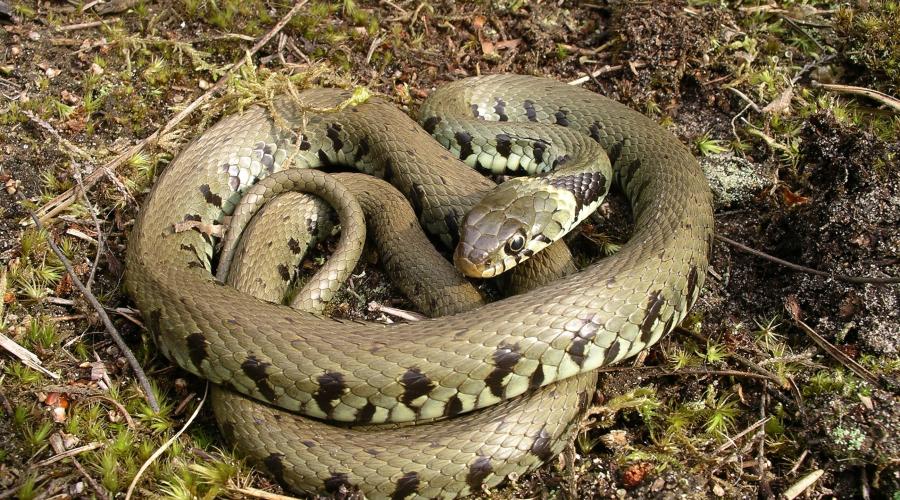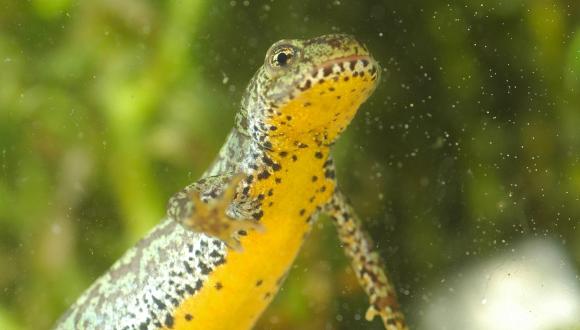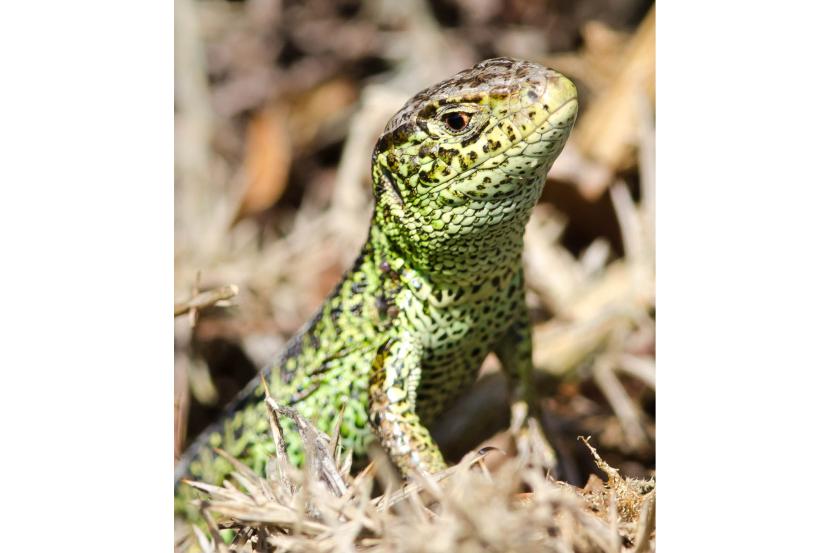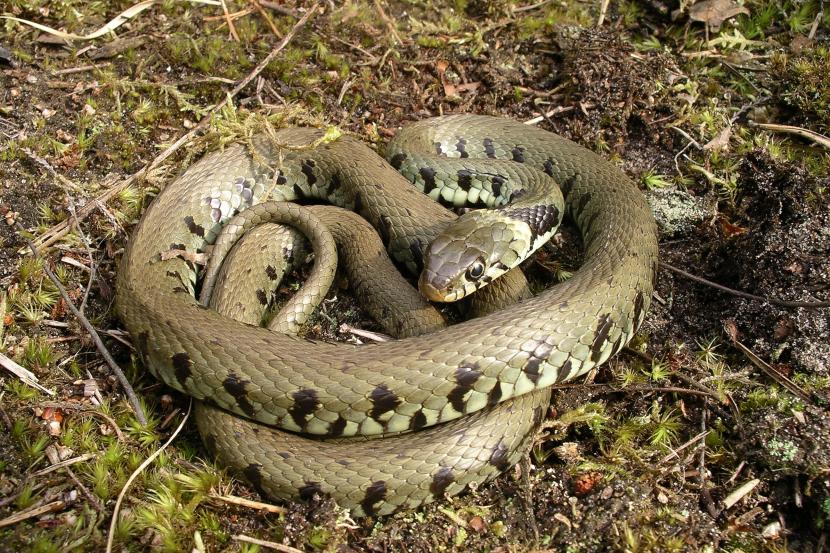
Species introduced to Scotland
Alpine Newts

Alpine newts (Icthyosaura alpestris) are a non-native species that has established a few populations in Scotland, mainly in the Edinburgh area.
They can be identified through their blueish-grey skin and bright orange belly.
As they are invasive, if they are caught, it is an offence to release them back into the wild without the appropriate licence.
Sand lizards

Sand lizards (Lacerta agilis) have been introduced onto one island in Scotland (Coll).
They are a European protected species (EPS) in the rest of the UK, but as they are an introduced species, they should not be regarded as an EPS in Scotland.
Grass snakes

Grass snakes (Natrix natrix) are thought to be an introduced species in Scotland, with sightings mainly in Dumfries and Galloway and the Scottish Borders.
More research is needed to determine whether this species is in fact native to Scotland. Climate change could cause the northern range of this species to expand further into Scotland.
Grass snakes are often mistaken for adders, but are non-venomous and harmless to people. Grass snakes lay eggs unlike all other species of reptile in Scotland, which give birth to live young (with the exception of sand lizards which are introduced).
When threatened, this species will play dead and stick out its tongue.
Report a sighting
You should report any sighting of an amphibian or reptile to the Record Pool.
Alternatively, find out about taking part in the National Amphibian and Reptile Recording Scheme.
How can you help?
Reptiles and amphibians are both threatened groups, so it is important that we make space for these important creatures where we can. Here are some tips for ways that you could help:
- You could consider the addition of a pond to your garden to create more habitat, or encourage the growth of bug friendly plants to ensure a plentiful food supply.
- Using non-toxic methods of pest management will prevent reptiles from consuming prey that are contaminated with poison.
- Ensure that green spaces are preserved and kept as wild as possible.
- Record any reptile or amphibian sightings to the Record Pool and the NBN atlas.
- Get involved with your local amphibian and reptile group. There may even be opportunities for you to help with monitoring and surveying, or even trips to local sites!
- Help raise awareness about reptile and amphibian conservation within your school or workplace.
Further resources
For information regarding the legislation that protects our reptiles and amphibians, see Protected Species: amphibians and reptiles
For a comprehensive overview of the reptiles and amphibians of Scotland, see the book ‘The Amphibians and Reptiles of Scotland’ by Chris McInerny and Pete Minting.
For free online ID guides regarding British amphibians and reptiles, please refer to the ARG UK website.
Find out how you can take part in the National Amphibian and Reptile Monitoring Programme.
To find your local reptile and amphibian interest group, as well as additional resources, see the ARG UK website.





